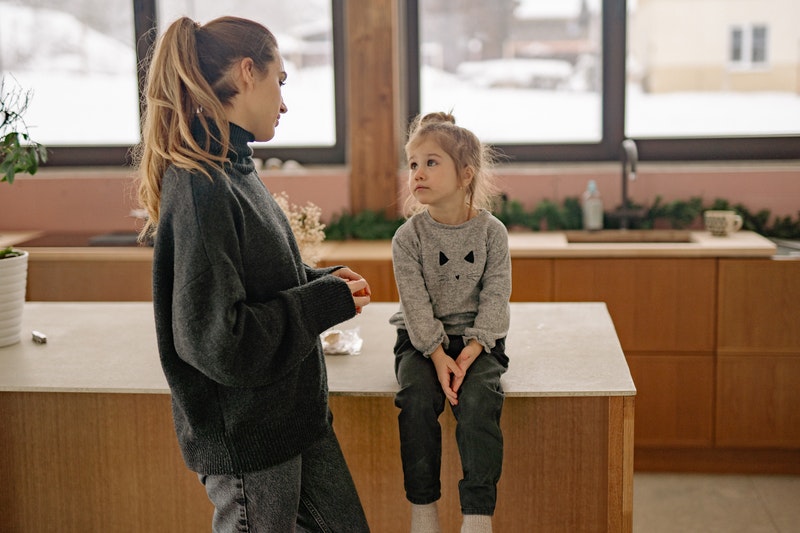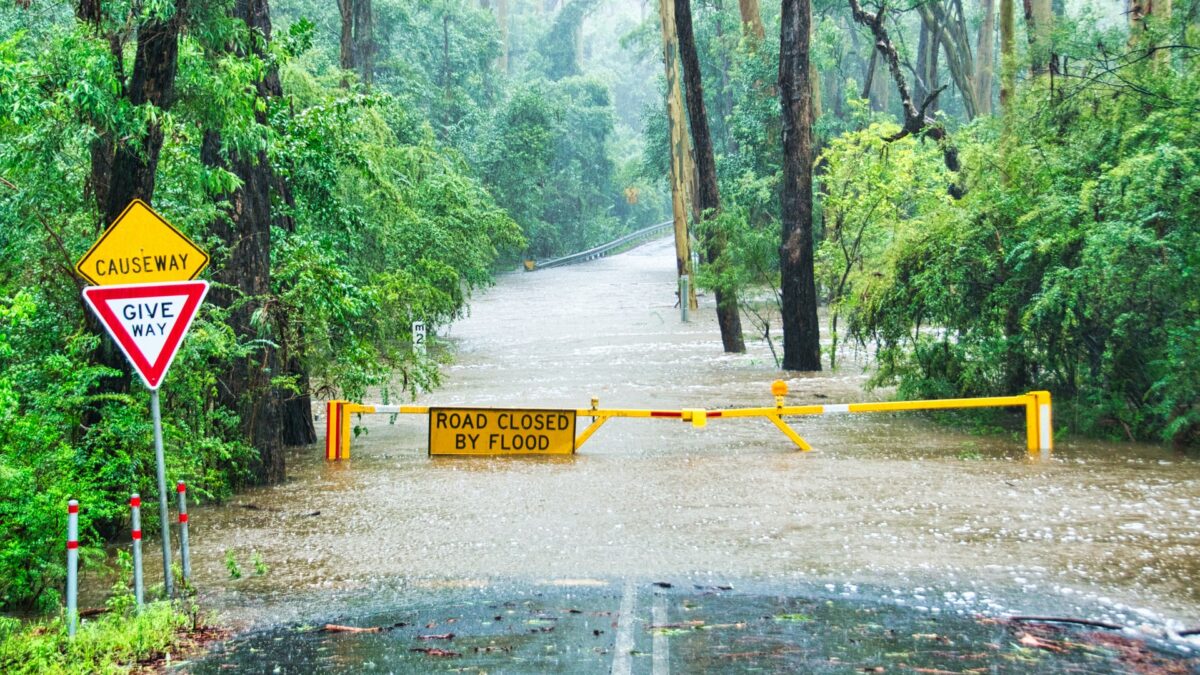This year has started pretty tough emotionally for everyone. A seemingly never-ending pandemic, the Ukraine-Russia conflict, rising cost of living and of course, heavy rain and flooding.
Children can be impacted by floods in a variety of ways: Having to evacuate and leave everything behind; knowing family or friends who have had to leave; or watching distressing images and hearing sad news in the media.
The current flood situation in NSW couldn’t have happened at a worse time, coinciding with the start of the school holidays. Not only that, many communities are still recovering from the impact of floods a mere few months ago or struggling with the increased cost of living brought on by inflation and rising petrol prices.
Faced with seemingly such insurmountable situations, it’s normal for parents to feel worried and helpless too.
“It’s important for children to identify the same feelings in their parents,” says Deirdre Brandner, a child psychologist based in Melbourne.
What’s most important is that parents and children have the opportunity to have an open discussion, so any underlying issues and concerns can be addressed. Read on as we talk about the ways parents can help children impacted by floods in different ways.
Signs to look for
According to the Beyond Blue’s “Impact of natural disasters on mental health” fact sheet, it’s normal for children to show signs of distress.
“Depending on their age and developmental stage, children and young people might react in various different ways,” the fact sheet states. As a guide, below is a list of common signs and symptoms you might observe, which may indicate a child or young person is experiencing trauma:
- complaints about physical health (for example, sore tummy or headaches)
- fear that something bad will happen to themselves or primary caregiver/s
- difficulties separating from primary caregiver/s and/or extreme clinginess
- nightmares and difficulty sleeping alone
- changes in thinking, slowed thought process
- withdrawal from normal activities, friends and social situations
- isolation (spending more time in their room or alone)
- new awareness of death and mortality
- difficulty talking about traumatic events
- decline in educational functioning, concentration and poor learning outcomes
- recounting negative events in play and stories
- appearing more alert and watchful for signs of danger.
Bear in mind that children with additional needs are often more vulnerable and may require support from professionals with specialised training.
Helping children directly impacted by floods

Thousands of families have had to flee during the recent deluge. Many have witnessed destruction, experienced loss and encountered fear like they’ve never had before.
“After a traumatic event, children need comfort, reassurance and support, and to know that they are safe and are being looked after,” an information sheet released by the Australian Psychological Society states.
While this may be challenging, especially if you’re in an evacuation centre or temporary accommodation, there are a few things you can try to help your children feel secure:
- Let them know they are safe now.
- Especially for younger children, offer plenty of physical affection. Hugs, holding hands, snuggling are great. If they still have a comfort toy and blanket, offer it often.
- Recognise and allow your child to be more clingy than usual.
- Offer opportunities to play. It’s how children interpret experiences and process feelings.
- Choose at least one familiar routine you can recreate and stick to, even in a different setting.
- Keep them in a bubble, at least for a while. This is to prevent them from getting triggered or re-traumatised. Shield them so they don’t overhear worrying discussions. Monitor their media (social and traditional) exposure to the disaster.
Sesame Workshop, the non-profit behind Sesame Street, has a family guide on how to help children impacted by floods. “After a disaster, children look to the adults around them to see how they should feel and react,” they say. “As much as possible, try to stay calm. Encouraging your child to talk about their feelings is also very important.”
Talking to children about floods (and other emergency situations)
Start by listening to them. The questions may come right when you least expect it, but when they do, it’s a sign they’re willing to talk—and listen. Offer them the information they want, but keep in mind the details you offer. Be honest with your answers, but make sure they are age-appropriate.
If children are not directly impacted by floods, but have heard or seen others who have, their main overriding emotion might be fear. It may not be obvious at the start, but Deirdre’s tips on how to help kids who are worried about the Russia-Ukraine conflict apply here as well. As she points out, it’s how psychologists help children cope with any type of fear:
- Help your child pinpoint exactly what is causing them fear and concern. (“We will get flooded too.” “My pet cat will drown.” “We won’t have a place to live.”)
- Help them explore if there is any evidence to support them feeling that way.
For preschooler-aged children, Sesame Workshop has produced a series of videos and talking points about emergencies and disasters. They feature favourite characters like Elmo and Big Bird, helping children to cope with the emotions that rise in such situations.
In the video below, Rosita and her mum discuss how emergencies also mean help is on the way.
For some kids, knowing the family is ready for an emergency can also be very reassuring. Sesame Workshop has an entire resource on emergency preparedness.
How to help
One of the best ways to help children have hope is to spring into action. It lets them know that what they do matters and helps them have some sense of control. Some ideas include:
- Donating to aid organisations helping with flood relief.
- Donating goods, services or volunteering through GIVIT (see note below).
- Keep a look out for churches and other community groups in your area, putting together care packs for those affected by the floods.
- Ringing a family member or family to check if they are alright.
- Writing a letter or drawing something nice for people affected by the flood.
Note: While the act of giving is a praiseworthy act, be mindful not to inundate charities and the affected areas with items they do not need. Work with partnered organisations to ensure those impacted receive exactly what’s needed.
If you need help
- Lifeline: 13 11 14
- Beyond Blue: 1300 22 4636
How helpful was this article?
Click on a star to rate it!
0 / 5. 0
Be the first to rate this post!
Melody Tan
Related posts
Subscribe
Receive personalised articles from experts and wellness inspiration weekly!

